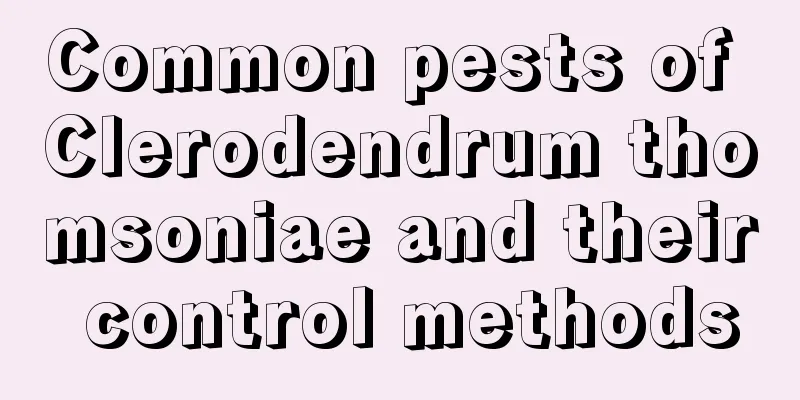Common pests of Clerodendrum thomsoniae and their control methods

Leaf BeetlePest symptomsLeaf beetles are generally more common in tropical regions. But this kind of pest also occurs in our country in summer. Everyone should also be careful and preventive. They often gnaw on the leaves, leaving them unrecognizable and destroying the ornamental effect of the plant. Prevention and treatment methodsArtificial capture and the addition of pesticides are two-pronged prevention and control measures. Once leaf beetles are found, they should be captured and killed immediately. Then spray the plants with pesticides to prevent the larvae from continuing to grow and harm the plants. The pesticide can be sprayed with 3000 times diluted 2.5% dimethoate. Ligustrum mothPest symptomsThe spiny moth, also known as the starworm, particularly likes to suck young leaves. The tender branches of the plants are where they live, and they often gnaw at the plants to the point of poor growth. Prevention and treatment methodsDuring the peak period of larvae, spray 1200 times diluted 80% DDT EC, 1000 times diluted 50% phoxim EC, 1000 times diluted 50% malathion EC, 1000 times diluted 25% phosmet EC, 1500 times diluted 25% Acumin EC, 3000 times diluted 5% Levofloxacin EC. Scale insectsPest symptomsAdults and nymphs suck sap from petioles, leaf bases, and leaf surfaces, producing yellow spots. Scale insects can easily reproduce and cause harm in a poorly ventilated environment. Prevention and treatment methodsEnsure ventilation. Once scale insects occur, spray 1000 times diluted 25% cypermethrin wettable powder or 800-1000 times diluted 40% cypermethrin emulsifiable concentrate in time, once every 7 days for 2-3 times in a row. WhiteflyPest symptomsWhiteflies suck plant sap, which can cause leaves to fade, curl, and shrink. They also often become vectors of various toxins and cause other diseases. Prevention and treatment methodsIt can be sprayed with 1000 to 1500 times diluted 40% oxydemeton-methyl. |
<<: Diseases and Pests of Hellebore and Their Control
>>: Common Pests of Angelica dahurica and Their Control Methods
Recommend
What is the best way to treat yellowing lucky bamboo leaves?
With its elegant posture and evergreen leaves, lu...
Disease control of round-leaf arrowroot
Sclerotium rotundum White rot is more common in r...
What colors does Phalaenopsis have and what are its characteristics
1. What colors are there? Phalaenopsis has a wide...
What variety of corn has high yield in 2022 (ranking of new variety seeds of stable yield corn)
As we enter 2022, a new year has begun. In terms ...
How to remedy the problem of succulent leaves falling off when touched?
Succulent plants come in a variety of shapes and ...
This kind of "bean", known as a "superfood", is rich in high protein!
Whether it is dumplings in the north or rice nood...
Yogurt box homemade cute small flower pot
Step 1 After drinking the yogurt box, tear off th...
What kind of banana, pictures of bananas
1. Basic Introduction Banana is an angiosperm bel...
Common varieties of figs
Braunschweig variety This kind of fig tree is rel...
What crops are suitable for planting in March? What crops can be planted in March?
March is the beginning of spring, when everything...
Where do pomegranates grow?
There are many varieties of pomegranates, but mos...
What flowerpot looks good with Hongyun Dangtou
What flowerpot is suitable for the lucky charm Ge...
The breeding method of six times profit
How to prepare Hexapoda seeds Here I want to expl...
Potted honeysuckle four seasons maintenance method
Spring care of potted honeysuckle In spring, the ...
What are the varieties of Monstera
Monstera obliqua Monstera deliciosa, also known a...









